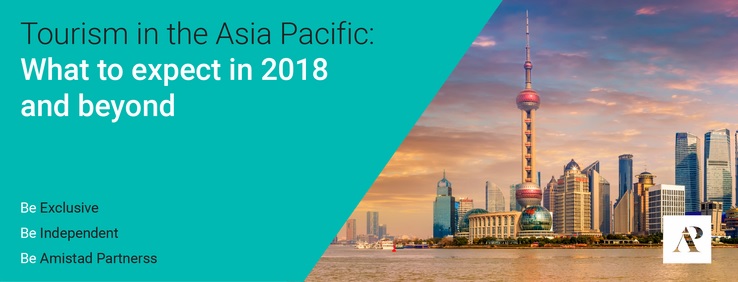Today’s AP voice is from our VP of Sales for Asia and the Middle East, Michelle Low.
LONDON, UK, 2018-Jul-25 — /Travel PR News/ — Unsurprisingly, strong economic growth across the Asia Pacific has gone hand in hand with a significant uptick in tourism, both inter-regional and international. In today’s post, I look at some of the key figures around this uptick and the trends that will continue to drive tourism across the region.
It is difficult to exaggerate the momentum of the economic boom across Asia. The UN reports that Asia is the world’s largest region in economic output, with the region’s gross domestic product surpassing that of the Americas for the first time in history in 2016. Between 2000 and 2016, Asia experienced the fastest economic growth across the world, driven by China and India.
Asian countries have awoken to the benefits of promoting tourism by opening markets and encouraging increased air routes. And tourists have heard the call. Data by the UN shows that the Asia Pacific is the second most visited region in the world after Europe and has seen the fastest growth. In fact, the region outperformed all other regions around the world, marking eight consecutive years of growth since 2010.
The best news for independent hotels is that there are numerous opportunities to attract guests. In 2017, Asia Pacific welcomed 324 million tourists, about a quarter of the world’s tourists. 75 percent of the inbound travel spending in Asia-Pacific is on leisure with the remainder being spent on business. While one-third of travellers stay for short trips lasting 0-3 days, over one-quarter stay for 4-7 days while another quarter of travellers stay for more than 12 days.
Of particular interest to the sales and marketing teams of independent hotels will no doubt be the trends that currently fuel and will continue to drive travels to the far east.
1) City breaks: In Mastercard’s Global Destination Cities Index 2017, five of the top 10 most visited cities were in Asia-Pacific. The region also had the highest spend by tourists among the top 10 cities. Bangkok is the most popular of Asia’s cities, followed by Singapore and Kuala Lumpur. In terms of future growth, Osaka is a rising star in terms of destination cities in Asia, with Chengdu in China and Colombo in Sri Lanka not to be outshined. Asian cities will see more tourist traffic in 2018 and beyond.
2) Inter-regional travel: 80 percent of the tourism is intra-regional and Chinese tourists are the largest contributors to this with China, South Korea, Taiwan and Japan as the most popular destinations for these travellers. The benefit for hotels in the region is that tourists are favouring to spend their money in the region rather than take it externally. A growing middle class has certainly contributed to a high demand of inter-regional travel in Vietnam and we expect this trend to continue.
3) Technology: As consumers become more sophisticated purchasers of travel, we can expect technology to continue to fundamentally change how travellers travel, from where they go to how they book flights and hotels. Booking Holdings, which includes brands such as booking.com and agoda.com, spent $4.5 billion in marketing alone last year, and while it is most commonly known in Europe, the company has ambitious growth plans in Asia. Hot on its heels is Airbnb.
Our job at Amistad Partners isn’t to inform clients about how their business environment is changing but to work with them to make the most of the opportunities that these changes bring. It is an exciting time to be an independent Hotel is Asia!
Source : https://t.co/LgUYGhddhJ

